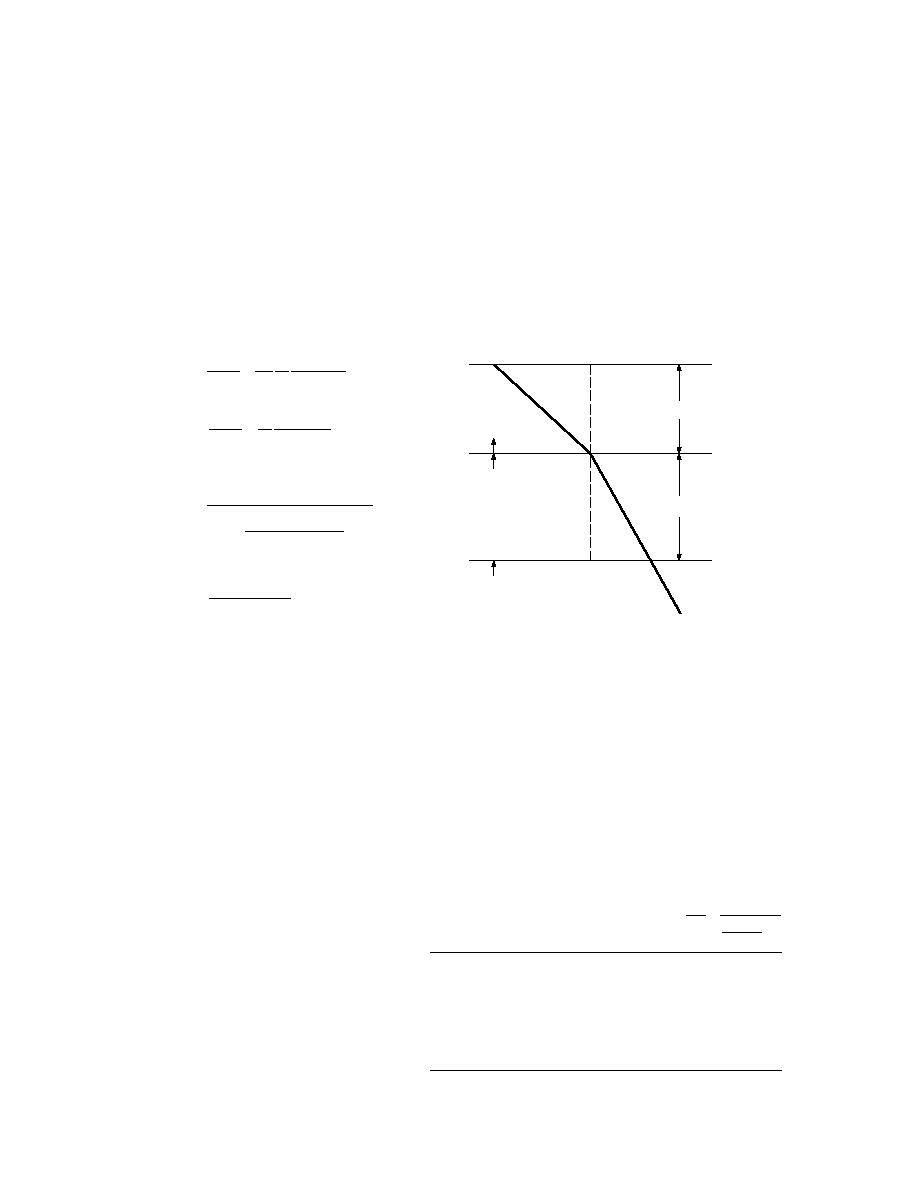
APPENDIX D: ENERGY FLOWS AT THE PERMAFROST BASE
The heat flows at the base of the permafrost layer determine the rate of movement of the permafrost bot-
tom. Examine Figure D1 to clarify the concepts involved. At any instant of time, an amount of energy,
qf(t), is conducted away from the phase-change interface through the frozen layer and to the interface from
the thawed zone 2, qu. It is important to realize that the constant geothermal heat flow qg = kuG will only
equal qu(t) at equilibrium. During movement of the permafrost base, qu(t) can be greater or less than qg. We
can examine the transient behavior of these terms. Let
Ts
Tf
q (t) kf 1 T1( X, t)
x=0
Qf = f
=
(D1)
kuG ku G
x
X (t)
Frozen, 1
q (t) 1 T2 ( X, t)
Qu = u =
qf (t)
.
(D2)
kuG G
x
x = X (t),
Bottom of
In terms of dimensionless parameters
Permafrost at t
qu (t)
1
Qf =
(D3)
δ (t)
Thawed, 2
α (σ + φ)
σk21
+ 1
21
[
]
β σ(β + 2) + 2φ
x = X + δ,
Depth for
qu = qg
σ(β + 2) + 2φ
qg = ku G
Qu =
(D4)
σβ
Thawed, 3
Figure D1. Energy flows at base of permafrost.
where we assume that ku = k2, i.e., the thermal conductivity of the thawed zone is constant. The results of
example 2 for Prudhoe Bay are tabulated in Table D1. Clearly, the heat flow from the deep layer greatly ex-
ceeds the geothermal heat flow for much of the permafrost formation period. Also, note how rapidly the
heat flow out of the frozen zone Qf drops to slightly more than the flow from the thawed layer Qu.
The temperature in the frozen zone adjusts very quickly toward the equilibrium result of a linear temper-
ature distribution; however, the thermal zone approaches equilibrium very slowly.
Surface temperature increase
Suppose the permafrost has thickness Xo,
is growing and the surface temperature ini-
Table D1. Freeze at Prudhoe Bay, Alaska.
∆T1 = 12.69C
φ=0
tially increases by a certain amount and is
k21 = 0.5812
ST = 0.1827
held constant for several thousand years.
α21 = 0.3915
Xe = 763.5 m
What is the effect on the permafrost? The
qf
1
bottom of the permafrost will continue to
=
Permafrost
α 21
q fe
grow for several hundred years before start-
Time
depth
+1
β
+ 2)
β(β
(yr)
(m)
Qu
Qf
ing to thaw, but Table D1 assures us that
this will be negligible. At t = 225,000 years,
1
4.44
1.9060
2.423
159.057
0.9251
350
79.9
1.6717
2.196
8.986
0.9405
Xo = 626.5 m and the permafrost growth
3500
219.3
2.3380
1.855
3.352
0.9629
will only be 27.5 cm during the next 1000
35,000
461.4
4.8154
1.4153
1.6351
0.9826
years. Thus, we can assume that the perma-
100,000
567.8
7.7133
1.2593
1.3375
--
225,000
626.5
11.1633
1.1792
1.2153
--
frost thickness remains essentially constant
775,000
687.7
20.3168
1.0984
1.1090
--
while the temperature in the frozen zone
35



 Previous Page
Previous Page
